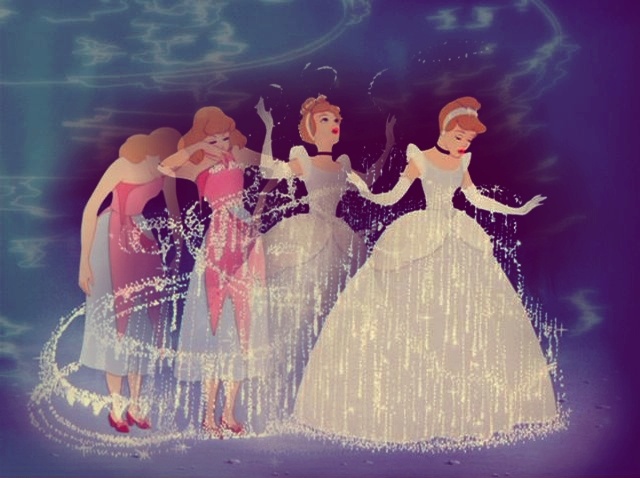We are all familiar with the classic Cinderella story: father remarries, father dies, stepmother mistreats Cinderella, and then Cinderella manages to get to a ball through some magical/extraordinary help, she meets the prince, they fall in love, and voila! She’s married to the crown prince and on her way to great riches.
But what are the impacts of this rags to riches story on Disney’s representation of class? In general, most Disney characters are somewhat well to-do or rich (Merida, Aurora, Rapunzel, Jasmine, Ariel, and basically all of the princes) and if they aren’t it is integral to the story line that they become so by the end of the movie. (Aladdin, Tiana, Belle, Linguini (Ratatouille), Annie). This structure leads to an almost complete absence of the poor, working, or even middle classes in the Disney Universe. “Disney either ignores poor characters wholesale or treats poverty as punishment,” according to Janet Burns. In fact, those who are in poverty as punishment, are usually being punished by the villain of the movie, but are eventually saved by a rich hero, usually a prince.
The backbone of this rags-to-riches story is the story of Cinderella:
Cinderella begins as a fairly well-off child, given all that she asks for. But when her father dies, she is immediately pushed into the lowest social class by her step family. The rest of the story follows Cinderella’s journey into the riches of her (unnamed) Prince Charming.
Although this type of storyline (displayed across several Disney movies and other children’s movies) is a nice sentiment, it does not provide a role-model for children in poverty. Waiting for a prince to come an sweep you away into your wildest dreams isn’t exactly a practical solution for impoverished families, nor is it one that gives them hope. Even when Disney shows snippets of poverty, working-class children cannot relate to these characters. But according to the 2013 Census, “approximately 31.6 percent of the population had at least one spell of poverty lasting two or more months.” Almost a third of Americans have experienced what it means to live in poverty.
Children need a story they can connect with, something that can give them hope and help them push beyond the confines of being in poverty. Tiana (Princess and the Frog), who begins as a working-class girl, had potential to be such a hope. But in the end, she too needed a prince to save her. Much more important however, is that the representation of the poor is a realistic one. One that shows the struggles of trying to pay the rent, trying to go to good schools without having the money to pay for those schools, and feeling very much unseen by the larger community. And one that moves children in the middle- and upper-classes first to compassion and then to action. The closest Disney has ever come to this is Lilo & Stitch, with two orphaned sisters (Lilo and Nani) who have an obvious lack of money. But just one movie won’t change the way anyone acts, so if Disney hopes to move into action those who can help the poor, they have to start showing those children how they can practically help. And they should change the typical storyline of being saved from a lower socio-economic class by a handsome prince.
Cover Image: Immersed in Glittered Words

Cinderella is definitely the classic Disney movie that portrays class. I agree with you that this movie can be detrimental to children because they can’t really connect to the characters and many young girls who are living in poverty may depend on men to help them live a better live, which can be detrimental in it’s own way. It’s crazy to think that almost all of the Disney movies portray wealth as living the best life and those living in poverty are often looked down upon, like how Cinderella’s step mother and sister heavily look down on her. You did a good job with explaining class through Cinderella and other Disney princess movies!
LikeLike
Pingback: Stalking Aurora – Multiculturalism and Disney
FUCK
LikeLike